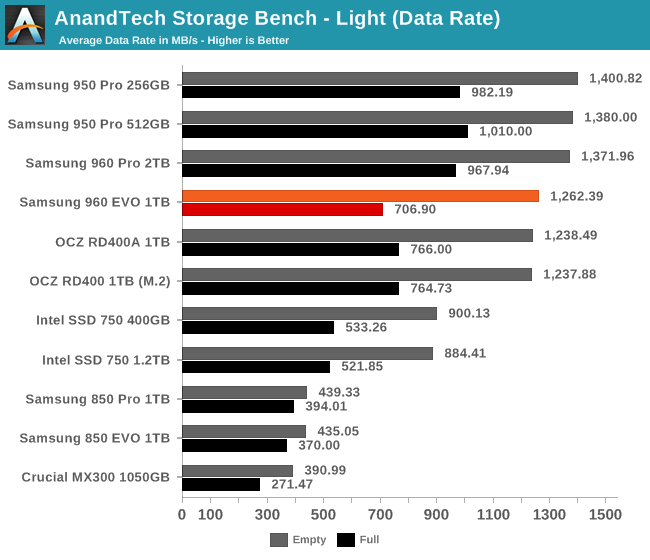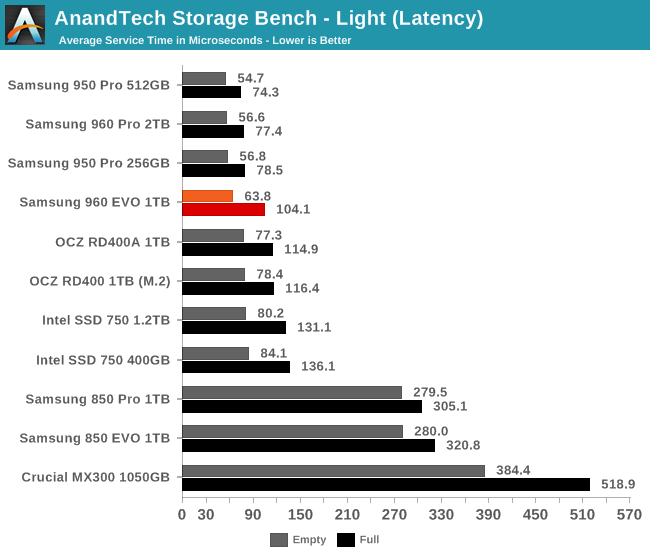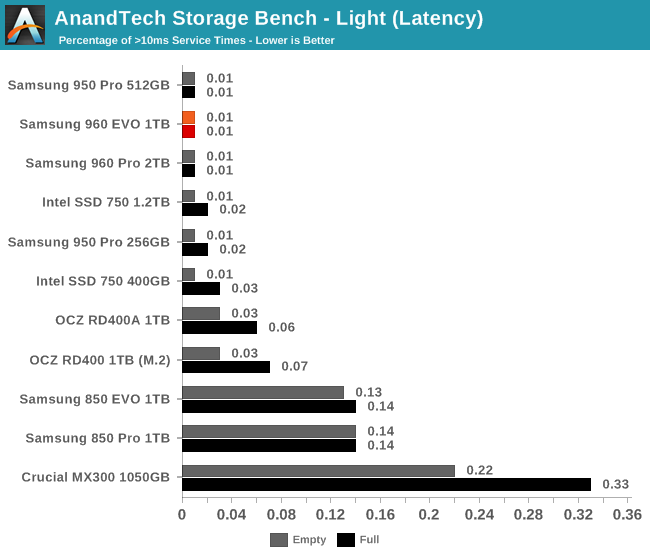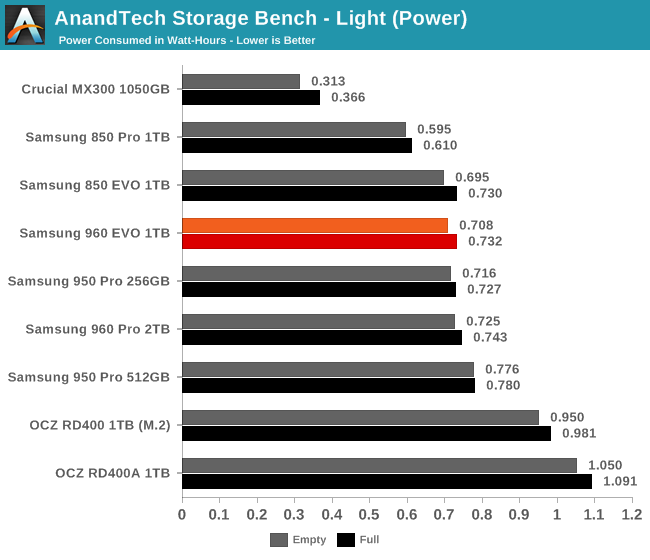The Samsung 960 EVO (1TB) Review
by Billy Tallis on November 15, 2016 10:00 AM ESTAnandTech Storage Bench - Light
Our Light storage test has relatively more sequential accesses and lower queue depths than The Destroyer or the Heavy test, and it's by far the shortest test overall. It's based largely on applications that aren't highly dependent on storage performance, so this is a test more of application launch times and file load times. This test can be seen as the sum of all the little delays in daily usage, but with the idle times trimmed to 25ms it takes less than half an hour to run. Details of the Light test can be found here.

As with the previous ATSB tests, the 960 EVO can't quite keep pace with Samsung's MLC-based 950 Pro and 960 Pro SSDs, but it is slightly faster than the OCZ RD400. On this test the 960 EVO suffers relatively more from a full drive, where it falls behind the RD400.

Average service times are slightly slower for the 960 EVO than Samsung's other PCIe SSDs, and the competing PCIe SSDs are a step further behind.

The 960 EVO is tied for first place with minimal high-latency outliers, but all of the PCIe SSDs are much better than the SATA drives.

Once again the 960 EVO's power efficiency is about the same as Samsung's other drives, showing that its higher instantaneous power draw than SATA drives is compensated by it completing the test quicker.










87 Comments
View All Comments
TheinsanegamerN - Tuesday, November 15, 2016 - link
Is there currently any consumer software that can change these settings?Billy Tallis - Tuesday, November 15, 2016 - link
I use nvme-cli on Linux to manually test these settings, and there's a patch working its way toward a stable kernel release that will let supporting drives automatically make use of their various idle states. I'm not aware of any Windows tools that give the same degree of fine-grained control, but Intel's tools for enterprise SSDs and the 750 have some power management options.TheinsanegamerN - Tuesday, November 15, 2016 - link
That would be nice. I'd love to be able to set my 950 pro to a max of, say 2 watt on battery, or set the maximum speed to sata III speed (on battery), if it meant better battery life, and enable full speed when on mains power.philehidiot - Tuesday, November 15, 2016 - link
Yeh I noted the thermal limits kicking in and I did wonder if there's any major benefit from hacking these things, putting on some thermal goop, a big heat sink and a fan. Obviously it'll probably not help in the majority of cases but the mentalist part of me was pondering just how much performance there is to be unlocked.TheinsanegamerN - Tuesday, November 15, 2016 - link
The fan would be a bit of overkill, but the 950 pro showed some gains with a passive heatsink installed. The 960 would probably benefit even more.philehidiot - Tuesday, November 22, 2016 - link
Time to break out the liquid nitrogen. If anyone at work asks where it has all gone I'll just say I was remove the mother of all warts from a patient.philehidiot - Tuesday, November 22, 2016 - link
*removing. Bloody spelling.nagi603 - Tuesday, November 15, 2016 - link
A shame they dropped the write endurance to half of the 950!TheinsanegamerN - Tuesday, November 15, 2016 - link
TLC vs MLCbull2760 - Tuesday, November 15, 2016 - link
Why do you not show consistent results. In some tests you include the Intel 750 and on other you exclude it in the graph. You excluded the Intel 750 in the power consumption both times. Are you not able to calculate the power being used when the Intel drive is being used?